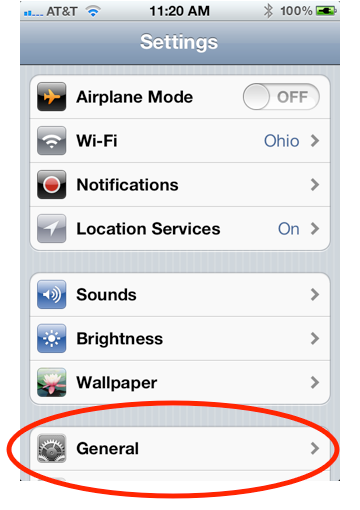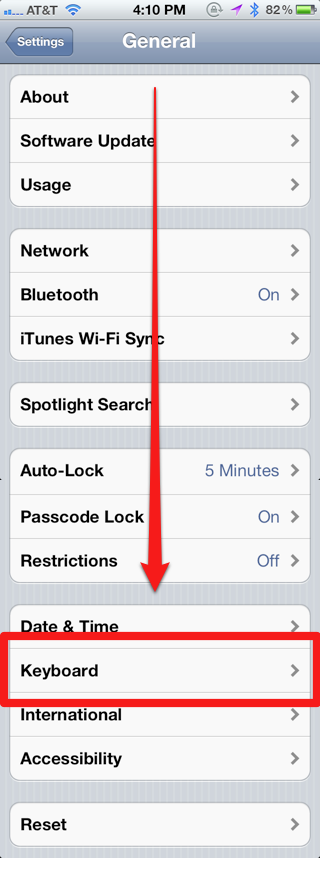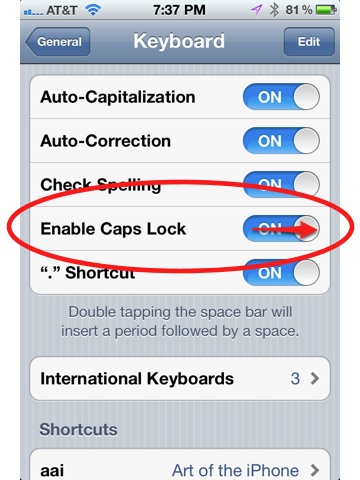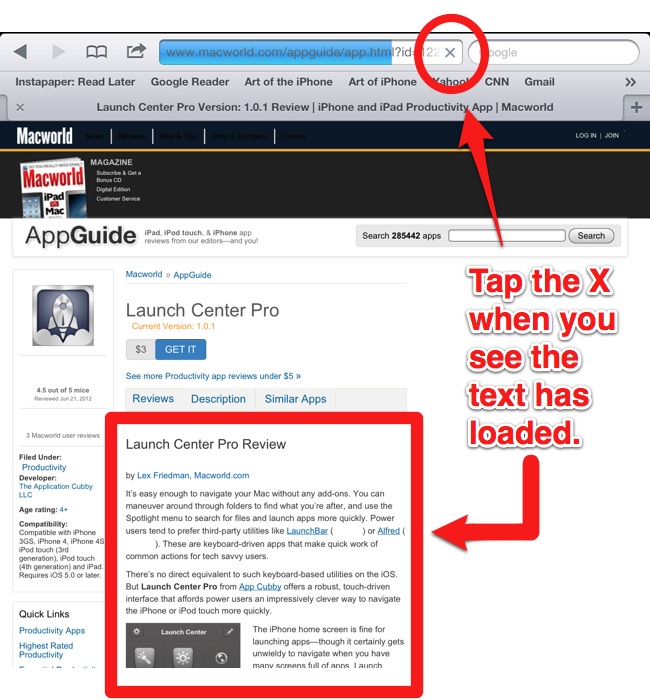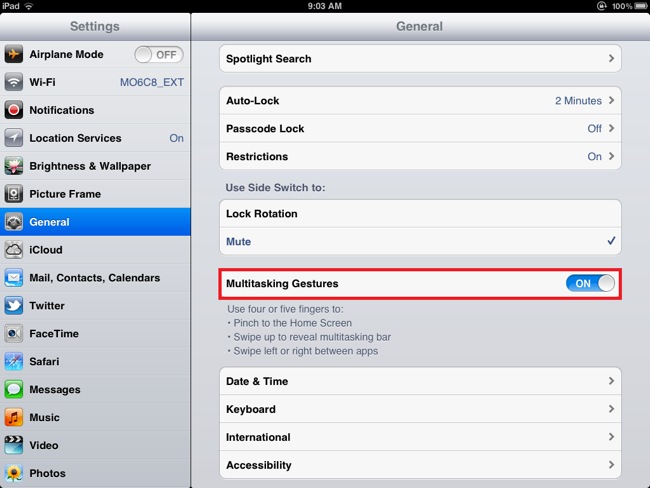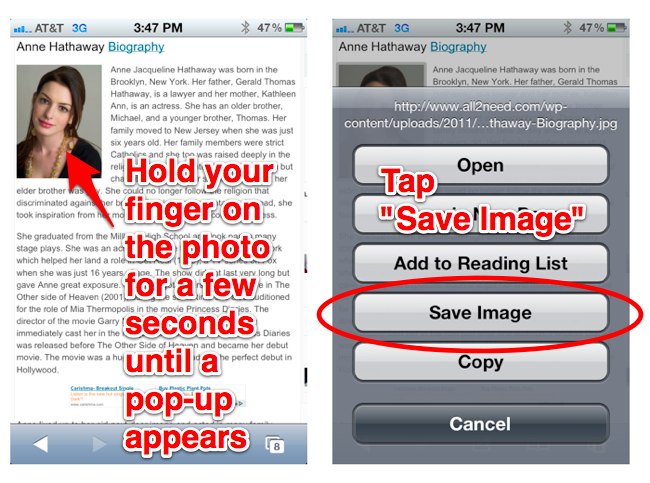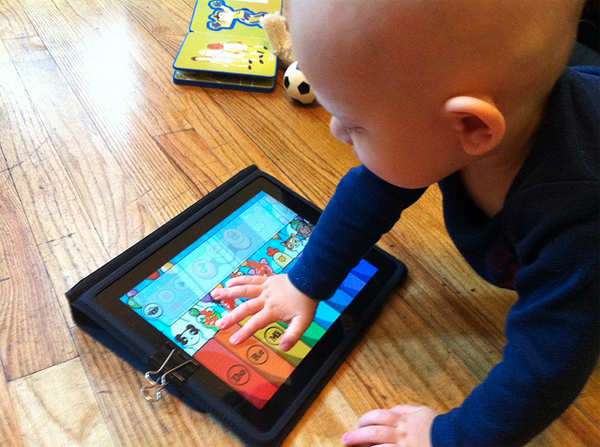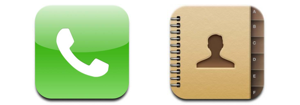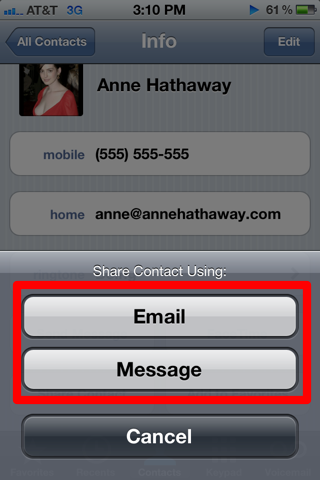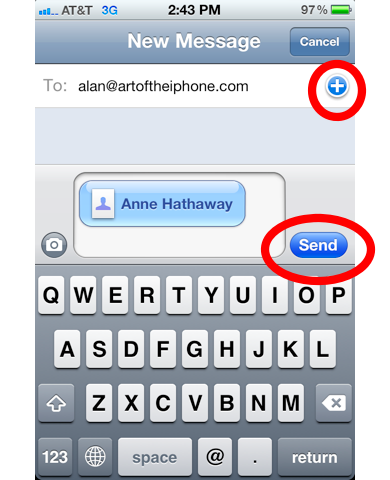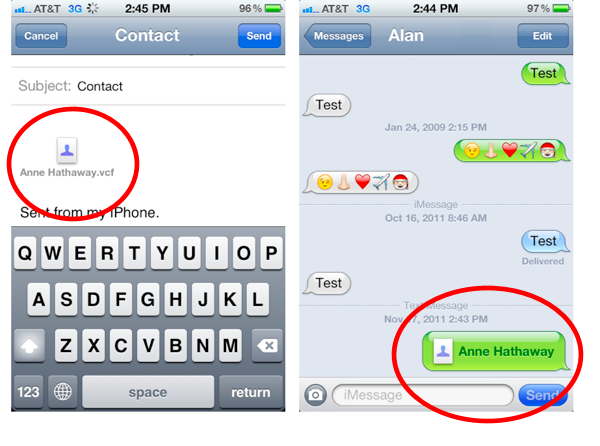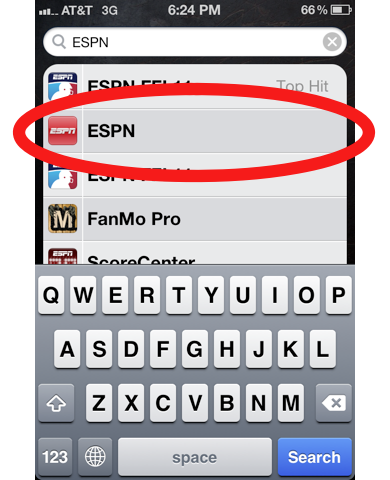When you first unwrap your iPad, it’s a pretty sweet device as is. But once you become familiar with it, there are a few tweaks to its settings you can make to improve your user experience even more. Below are 10 tweaks you can make to the iPad’s settings to improve the iPad.
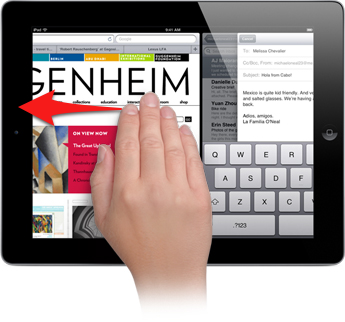
1. Turn on 4-finger swipe gestures for improved multitasking. Want to quickly switch between apps by swiping the screen with four fingers? First, go into the iPad’s Settings–>General and slide the Multitasking Gestures tab to On. Now, launch a app, then to swipe to the left with four or five fingers touching the screen at the same time. See how quick that is? Now swipe to the right to switch back.
Having trouble getting your fingertips to touch the screen at the same time? Here’s a tip: form a claw with your hand and paw the screen (trust me, it’s more accurate). Full instructions here.

2. Add a bookmark bar to the iPad’s browser. Tired of navigating the maze of folders and subfolders in the iPad’s bookmark menu to launch your favorite sites? Turn on the bookmarks bar for always-visible, one-tap access to your favorite sites! Here’s how:
Go into the iPad’s Settings–>Safari and swipe the Always Show Bookmarks Bar tab to On.
Now go back into the Safari browser and you’ll see a bar has been added. Now fill that bar up with your favorite sites. To add bookmarks to this bar, tap the + symbol at the top of Safari, tap Add Bookmark, then tap Add to Bookmarks Bar. Visual instructions here.
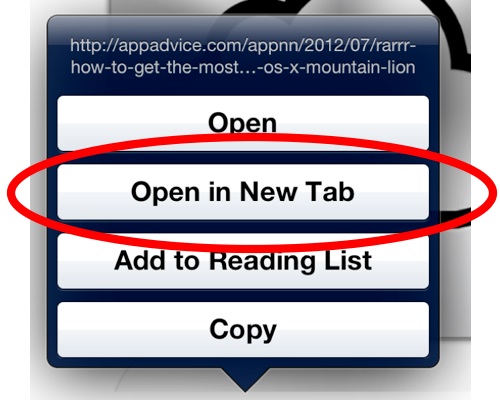
3. Open new web links in the background in Safari. One annoying feature of mobile Safari is that opening links in a new tab means you automatically switch to that new tab. You can change this behavior so that the new tab opens in the background instead (without switching). To enable this, go to Settings > Safari and slide the Open New Tabs in Background to On.
Please note that, for this to work, you have to hold your finger on a link until a pop-up menu appears (see photo above) and then tap Open in New Tab. Simply tapping a link (without holding your finger on it) will always take you to that link in the current window.
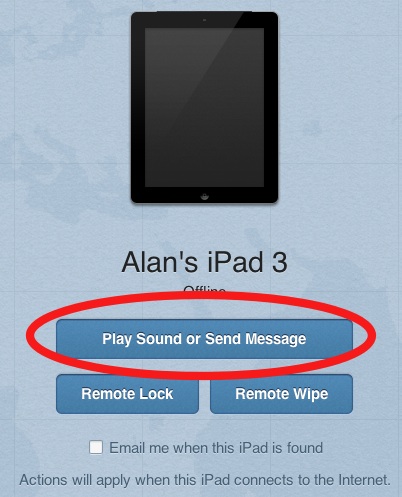
4. Find a lost iPad by making it beep. Some people think that the Find My iPhone/iPad service is only for when your device is stolen. But it also comes in handy for an iPad lost under a stack of newspapers or between the couch cushions at your home. You can make the iPad emit a beeping noise to help you find it. It will even beep if you have the sound muted! But first, you’ll need to activate Find My iPad. Here’s how. Go to Settings on your iPad, tap iCloud, and enable Find My iPad. Note your iPad must be connected to Wi-Fi.
Now, to make your iPad beep, go to iCloud.com, sign in, and go to Find My iPhone (yes, iPhone). Select the iPad and click Play sound or message.

5. Change the iPad’s side switch to serve as an orientation lock. The switch on the side of the iPad by default functions as a mute switch. But you can change it so that it functions to lock the iPad’s screen into its current view (portrait or landscape). To change the switch’s function, go into Settings > General, and under Use Slide Switch to: tap either Lock Rotation or Mute.
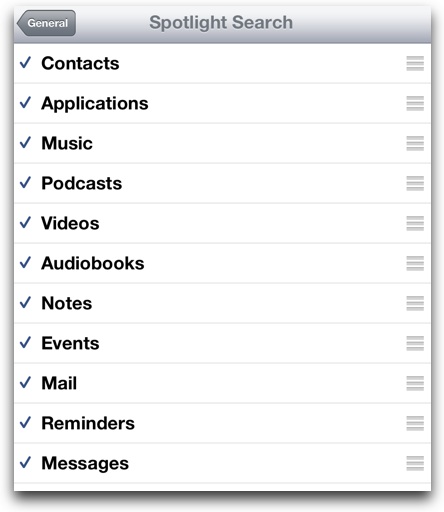
6. Prevent email, contacts, songs, etc, from showing up in Spotlight search. Spotlight search is a powerful feature for the iPad that lets you quickly locate and launch apps, contacts, etc. But the search results can easily become clogged with items you may not want, like emails, notes, etc. You can filter out these items by going to Settings > General > Spotlight Search and selecting or deselecting items in the list.
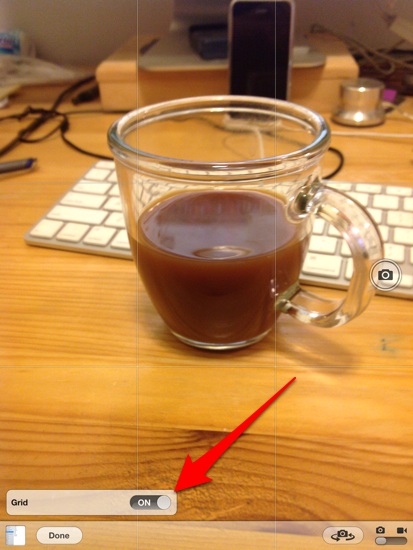
7. Have the Camera app display a grid while taking photos. Part of good photo taking is making sure subjects are centered and aligned. To aid you in this, the iPad’s Camera app has a grid to help you align objects in your photos. To turn on the grid, open the Camera app, tap Options in the bottom left corner, and slide the Grid tab to On.
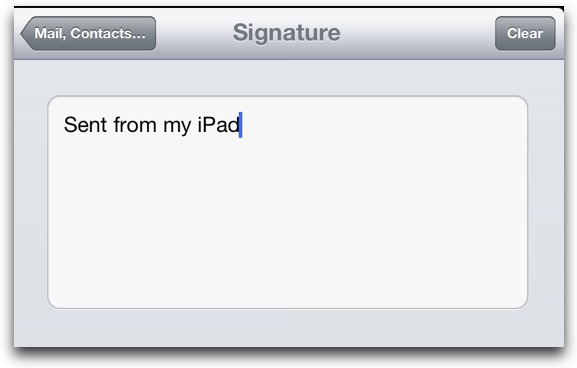
8. Change or delete the “Sent from my iPad” email signature. If you’re annoyed that the iPad adds “Sent from my iPad” to the end of every email you send, you can personalize it with your own message or delete it all together. Simply go into Settings > Mail, Contacts, Calendars, and tap Signature. Delete the text shown or change it to whatever you want.

9. Cover your web browsing tracks by turning on Private Browsing Mode. We all occasionally go to websites we don’t want others to know we’ve visited. The iPad offers a Private Browsing Mode that won’t remember sites visited or your Google searches. To cover your tracks and enable Private Browsing, go into Settings > Safari and slide the Private Browsing tab to On.
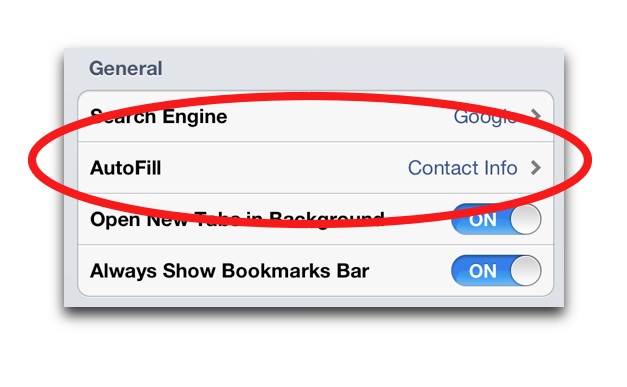
10. Turn on Auto-Fill to Automatically Fill Out Web Forms. Tired of repetitively typing in your address, email, etc, into web forms? You can turn on the iPad’s Auto-Fill feature to instantly fill out those fields in web forms. To turn on AutoFill, go to Settings > Safari and tap AutoFill, then slide the Use Contact Info tab to On. Please note that it pulls info from your contact info in the Contacts app, so go fill out that information if you haven’t yet.


